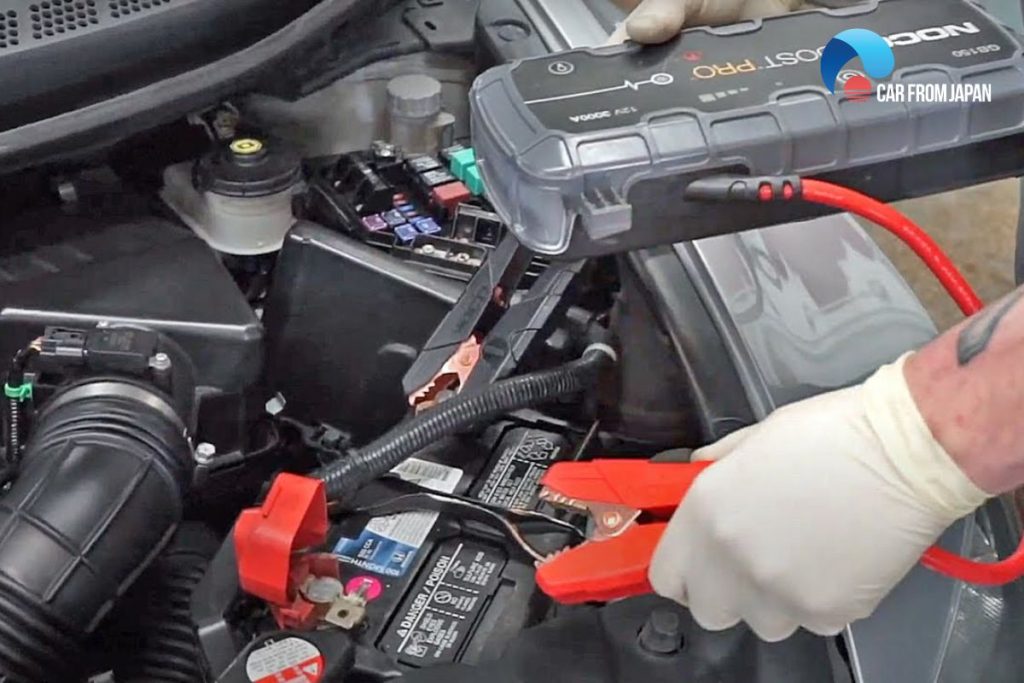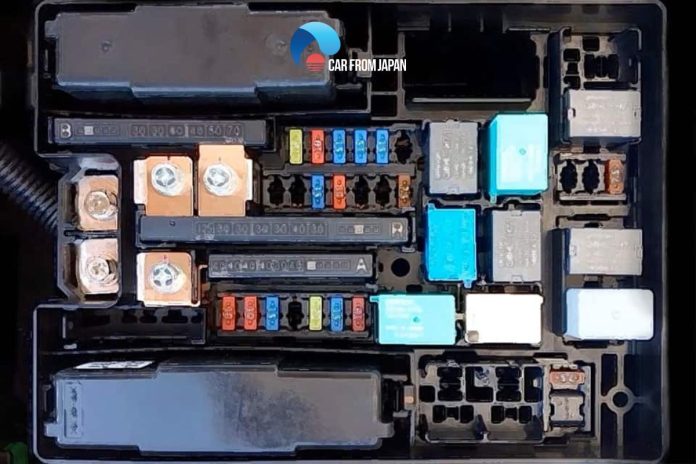Between 2011 and 2020, Honda CRV battery problems are under fire due to being sued on some car models. Its battery is also subject to draining symptoms that continue to suck power when the vehicle is left unattended.
Undoubtedly, Honda has plenty of advantages and distinct traits that can attract users worldwide for years to come. However, nothing is all perfect. And Honda CRV is one of the most notable mentions.
Although CRV is a top-hot model gripping a dream reputation, it has also been sued for using a low battery. This issue can be due to vehicle stability assist VSA, faulty A/C relays, or incorrect battery charge management.
Several generations and models of CR-V have used these errored batteries. You can try to let one of these devices sit for a few days, and chances are, it won’t start due to low battery, draining parasites, and inefficient charging system.
From 2011 to 2019, the most common problem that Honda CR-V users have to face is a drained or dead car battery. This error, ironically, became an indispensable trait of the model for almost one decade.
When talking about the Honda CRV, people may somehow automatically regard it as an under-performed battery. Manufacturers have never been proud of it and always find a way to solve things as much as possible. But still, the consequences are unavoidable.
Over the years, Honda has released numerous technical service bulletins (TSBs) outlining potential software fixes for battery problems. Those fixes don’t always work, though, and are limited to the 2012 and 2017 model years.
Contents
- Honda CR-V Battery Problems: Case Lawsuits
- Generations Reported Honda CRV Battery Problems
- Why Does The Honda CR-V Battery Keep Dying?
- Other Honda CR V Battery Issues
- Some Possible Solutions For Honda CR-V Battery Problems
- How To Jump-start A Honda CR-V When Its Battery Has A Problem?
- FAQs on Honda CR-V Battery
- Why does my Honda CR-V battery drain even when the car is turned off?
- Why does my Honda CR-V battery struggle in cold weather more than other cars?
- Why does my Honda CR-V battery die faster after short trips?
- Why does my CR-V show a “Battery Low” warning even after driving for a while?
- Do hybrid Honda CR-V models have different battery issues than gasoline models?
- How often should I replace my Honda CR-V battery to avoid sudden failure?
- Wrapping Up
Honda CR-V Battery Problems: Case Lawsuits
Facing problems years after years without clean-n-clear solutions and not-big-n-strict enough Honda CRV battery drain recall, this car line has been dealing with quite a lot of scandals.
Some lawsuits in this regard have been filed with the court. These are collective claims covering a group of owners in a particular area/province.
Case 1
George Jones, vs. American Honda Motor, Co., Inc. (June 2021)
The class-action lawsuit says that the Honda CRV draining battery from unknown sources causes many safety malfunctions, including the headlights and emergency hazard lights that car owners need if the vehicle is stopped.
- Vehicle class: Honda CR-V 2017-2019
- Location: Iowa
Case 2
Mastrangelo vs. American Honda Motor, Co., Inc. (February 2021)
The Honda CR-V’s battery drain issue has sparked a class-action lawsuit alleging that the battery is too small to power the vehicle. In addition, the plaintiff alleges that the model years 2017-2019 are infected with an error that causes battery death.
- Vehicle class: Honda CR-V 2017-2019
- Location: California

Generations Reported Honda CRV Battery Problems
This problem has appeared in the following Honda generations.
4th generation Honda CR-V
- Year: 2012–2016
- Reliability: 51st out of 58
- PainRank: 34.7
- Complaint: 1238
5th generation Honda CR-V
- Year: 2017–2020
- Reliability: 43rd out of 58
- PainRank: 21.19
- Complaint: 481
See More: Honda HRV Problems: 5 Most Common Complaints
Why Does The Honda CR-V Battery Keep Dying?
Batteries compete with parasitic exhaustion, which occurs when an electrical component continues to draw power from the battery even when the vehicle’s engine is turned off. A car battery will slowly lose power if left unplugged for only a few days.
Vehicle Stability Assist (VSA)
Vehicle Stability Assist (VSA) software on the 5th generation CR-V can continue to draw power from the battery after the vehicle has shut down.
In TSB #17-032, titled Withdraw parasitic battery from VSA modulator (vehicle won’t start), Honda says the VSA software logic may not shut down correctly when.
- The electronic parking feature (EPB) is applied within 3 to 4 seconds of the vehicle shutting down.
- The EPB switch is held for 3 to 4 seconds when the car is turned off.
The VSA modulator will continue to use 350mA of power after the vehicle is off. That amount of power is probably more than enough to drain the battery after one to two days.

A/C Relay Drain
The A/C relay in the 4th generation CR-V can continue to operate after the engine is off. A shorted and damaged resistor means the relay is stuck in the open position, draining the battery through the multiplexing system. The relay is a $9 part and easy do-it-yourself repair.
Other Honda CR V Battery Issues
It’s not just parasitic drains that are killing CR-V batteries. Here are some other common problems in CR-Vs after 2010.
Wrong battery management charging mode
In November 2012, Honda released SB #12-041 titled Battery Dead and Needs Multiple Warmups. Two years later, they released SB #14-071, titled Battery Management Software Update.
Both service messages describe an issue in the powertrain control module (PCM) where the appropriate charge mode for the battery was not selected when the vehicle was turned off.
The computer’s system needs to be updated with software and has a functional battery.
Generator faulty
When the engine is on power, the alternator will automatically charge the car battery. However, the CR-V’s generator can sometimes be fully-charged or short of battery power, reducing its performance in some way.
In February 2013, Honda released TSB #12-002 outlining the alternator test procedure with the GR8 Diagnostic Battery Station.
Honda CR-V dead/battery draining symptoms
The Honda CR-V typically needs a strong 12-volt battery for the vehicle to function properly. Not only does it provide the high current necessary to start the motor, but it also helps power the accessories, the onboard computer, and the sensors.
So, what happens when this battery becomes so weak that you can immediately notice it?
Slow rotation motor
The 12-volt battery is a required component of the starting system on the Honda CR-V. It supplies power to the starter motor to rotate the engine.
If the battery is not charged enough, the motor may spin very slowly and may not start. Slow crank is often the first symptom of a dying battery.
Noisy clicks and won’t start
The leading cause of rattling and failure to start in the Honda CR-V is a low-level or weak battery.
If you hear a click from the engine compartment when you manage to start the car, that indicates that the battery has enough charge to activate the solenoid (the source of the clicking noise), but not enough charged power to provide power to the starter.
The starter motor requires a high current to turn the engine on, while the lights and wipers take little current to operate. So a low battery case, even with the electrical accessories working properly, is not ruled out in your CR-V.
The dashboard light is blinking/flashing
Another symptom of a low battery in the CR-V is a flashing dashboard light or a rapid click when you try to start the engine.
If the battery isn’t charged enough to power the starter motor and you try to spin the motor, the battery’s voltage will be so low that it won’t be able to power the lights, accessories, and, the starter. The rattling noise could be caused by the relay in the fuse box or the starter solenoid.
You can go to Youtube and check for a quick clicking noise caused by a low battery or a bad battery connection, usually from corrosion of the battery terminals.

Some Possible Solutions For Honda CR-V Battery Problems
In most cases, the best way to fix this problem is to take the vehicle to a trusted mechanic. Since diagnosing process can be complicated, a technician has the best chance of finding the root causes.
If possible, leave your car with the mechanic for a few days so they can observe the drainage problem and look for a source of issue.
If the blockage is caused by a issue caused by the A/C relay, replace the relay, which typically costs between $35 and $150, depending on the car care center.
Much of that cost is factored into labor, so if you have experience with electrical repairs, you may want to purchase the parts yourself and perform the replacement at home.
To replace the A/C relay, you need:
- Use the owner’s manual to locate the relay. It’s probably under the dashboard, and you’ll need to open the hood to access it.
- Use gloves and a fuse puller if necessary, and remove the old relay.
- Align the terminals with the fuse box and press with solid force to install the new relay properly and safely.
But what if you replace the A/C relay and the flashlight still stays on? Here are some more potential causes to look out for.
- The new-generation Honda CR-V runs on a specialized battery, designed to be light and efficient – but it may not last as long as other batteries
- Consider upgrading your battery if you are experiencing repeated battery drains.
- In some cases, a faulty alternator can be the primary cause of your battery problems. You may need to repair or replace the generator.
- Check your battery terminals to make sure that everything is connected correctly and that there are no corrosive substances or deposits affecting battery performance.
Related Post: Honda CRV Brake System Problem: What Are The Solutions?
How To Jump-start A Honda CR-V When Its Battery Has A Problem?
If you accidentally get stuck in the middle of the road due to a battery problem, you always need a backup plan to save yourself from difficult situations.
To deal with a running out car battery, your best course of action is to start the CR-V with an extension cord and a strong battery from another vehicle or use a battery booster if available.
Requirement: Engines of both vehicles must be off and transmissions parked.
- Connect the red cable to the positive terminal of the dead battery in the CR-V.
- Connect the other end of the red cable to the donor battery’s positive terminal.
- Check and link the black cable of the car battery to the donor battery’s negative terminal.
- Finally, connect the other end of the black cable to any unpainted bare metal parts of your CR-V body or engine.
- Safety warning: Connecting a black cable directly to the negative terminal of a CR-V battery can ignite flammable gas from the battery by sparking.
- Start your CR-V
- Remove the cables in reverse order.
Here is our warning notice for your reference during the battery jump-starting process. There is always a risk of burning the alternator or other electrical components with the running donor battery-powered vehicle’s engine during starting.

FAQs on Honda CR-V Battery
Why does my Honda CR-V battery drain even when the car is turned off?
Some Honda CR-V models, especially from 2017-2022, have been reported to have excessive parasitic battery drain due to faulty electrical systems, including the infotainment unit or the keyless entry system.
If your battery frequently dies overnight, a hidden power draw might be the cause.
Why does my Honda CR-V battery struggle in cold weather more than other cars?
Honda CR-Vs are known to have relatively small factory-installed batteries, which may not provide enough cold-cranking amps (CCA) in extreme temperatures.
Upgrading to a higher-capacity battery can improve cold-weather reliability.
Why does my Honda CR-V battery die faster after short trips?
Frequent short trips don’t allow the alternator enough time to recharge the battery fully.
This is especially problematic in CR-Vs with high electrical demand from features like heated seats, touchscreen infotainment, and safety systems.
Why does my CR-V show a “Battery Low” warning even after driving for a while?
This warning can appear if the car’s smart charging system isn’t delivering enough power to fully recharge the battery.
It could be due to a faulty battery sensor, excessive electrical load, or an underperforming alternator.
Do hybrid Honda CR-V models have different battery issues than gasoline models?
Yes! The hybrid CR-V has a 12V battery that powers accessories and the vehicle’s start-up process, separate from the high-voltage battery.
If the 12V battery is weak, the car may fail to start, even if the hybrid battery is fully charged.
How often should I replace my Honda CR-V battery to avoid sudden failure?
Most Honda CR-V batteries last between 3-5 years, but if you experience slow starts, dim lights, or electronic glitches, test and replace the battery before it dies unexpectedly.
Wrapping Up
Above are some Honda CRV battery problems you should keep close eyes on to assure that your car can operate smoothly within the service time.
If you encounter battery crises that are hard to solve, take your Honda to a reliable center as soon as possible to avoid sabotaging it without being aware of the problems beforehand.



